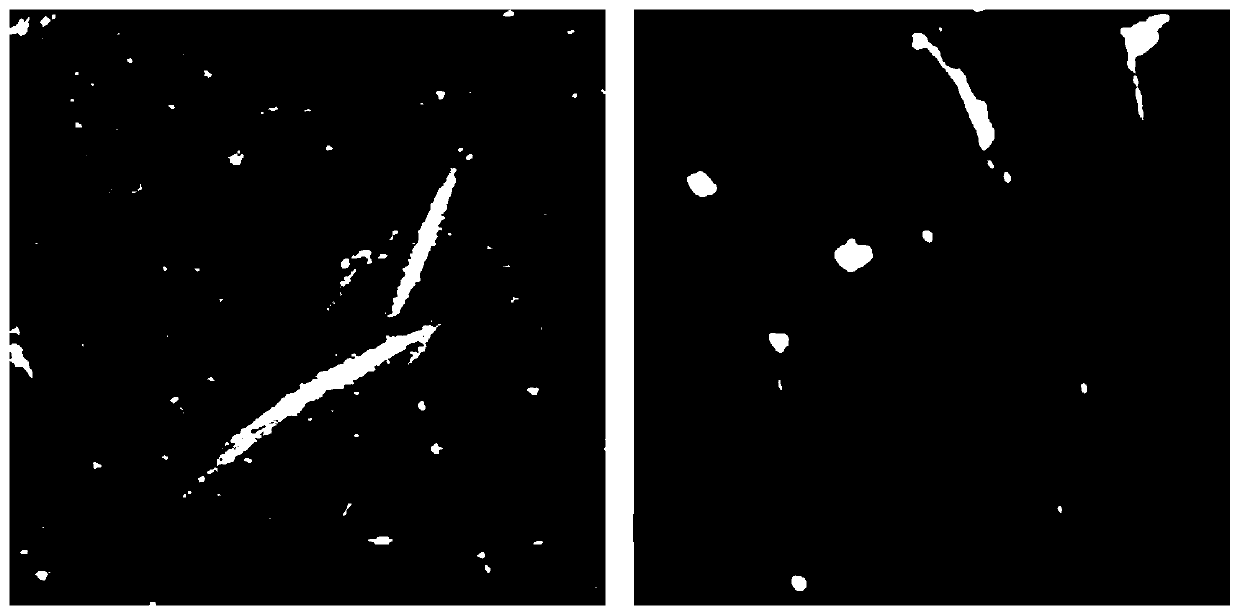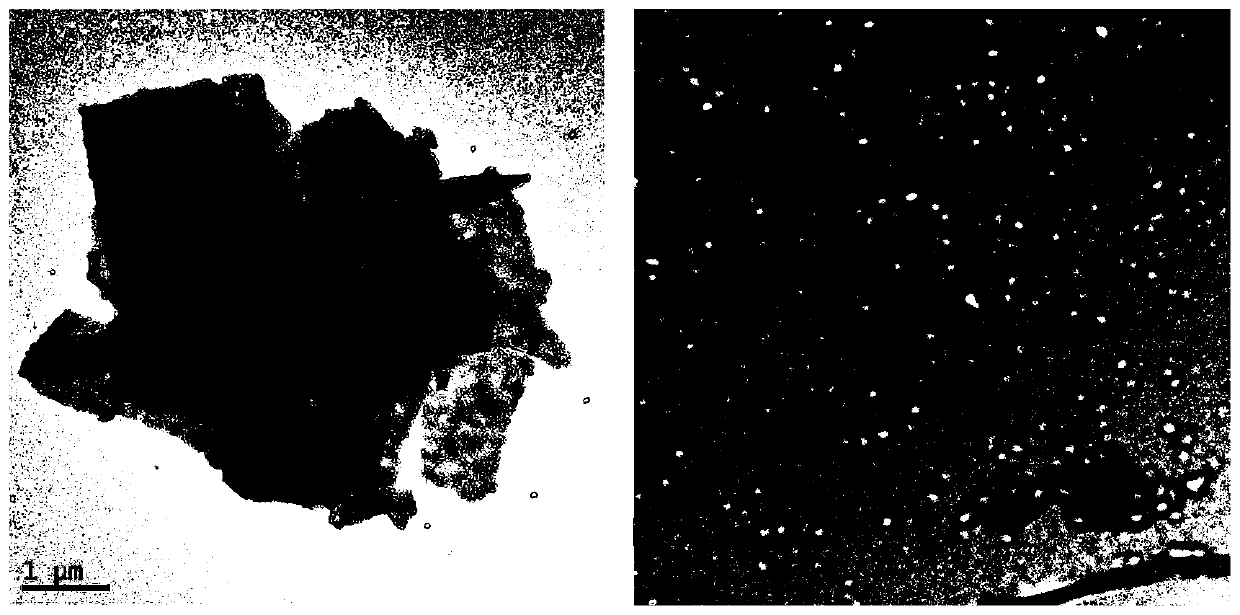Preparation method and application of a tumor-targeted photothermal therapy nanocarrier
A photothermal therapy and tumor-targeting technology, which is applied in the field of preparation of nanocarriers for tumor-targeted photothermal therapy, can solve the problems of normal cell damage, patient trauma and complications, and achieve good photothermal therapy effect and good photothermal therapy effect. The effect of simple and convenient conversion characteristics and preparation methods
- Summary
- Abstract
- Description
- Claims
- Application Information
AI Technical Summary
Problems solved by technology
Method used
Image
Examples
Embodiment 1
[0040] A method for preparing a tumor-targeted photothermal therapy nanocarrier, comprising the following steps:
[0041] S1. Preparation of GO-MoS 2 Composite: get ammonium molybdate 0.265g, sodium sulfide 1.152g, dissolve in 25ml water respectively, obtain ammonium molybdate and sodium sulfide solution; get 2.5ml (mass concentration is 1%) graphene oxide sol, dilute to 100ml, GO solution was obtained; the ammonium molybdate solution was added to the GO solution, magnetically stirred for 30 minutes, then the sodium sulfide solution was slowly added, and 10ml of 5mol / L hydrochloric acid was added dropwise, and the reaction was carried out for 1 hour;
[0042] S2. Then add 2 g of L-cysteine to the reaction solution, adjust the pH to 4.5, put it into a hydrothermal kettle and react at 200° C. for 24 hours;
[0043] S3, after the reaction solution is cooled, centrifuge and wash at 3500 rpm for 5 min (repeat 6 times), discard the supernatant; obtain sample A;
[0044] S4. Modi...
Embodiment 2
[0049] Repeat Example 1, the only difference is: in the preparation of GO-MoS 2 In the compound process, adjust the addition of sodium sulfide to 0.58g or 2.30g, and the rest of the steps are the same as in Example 1, and MoS can be obtained 2 Samples with different loading ratios.
Embodiment 3
[0051] Repeat Example 1, the only difference is: in the preparation of GO-MoS 2 In the composite process, the graphene oxide powder obtained by the modified Hammers method is used instead of the graphene oxide sol, and the rest of the steps are the same as in Example 1, and GO-MoS can also be prepared 2 The complex can be used to compare the effect of different raw materials on the cytotoxicity of the vector.
PUM
 Login to View More
Login to View More Abstract
Description
Claims
Application Information
 Login to View More
Login to View More - R&D
- Intellectual Property
- Life Sciences
- Materials
- Tech Scout
- Unparalleled Data Quality
- Higher Quality Content
- 60% Fewer Hallucinations
Browse by: Latest US Patents, China's latest patents, Technical Efficacy Thesaurus, Application Domain, Technology Topic, Popular Technical Reports.
© 2025 PatSnap. All rights reserved.Legal|Privacy policy|Modern Slavery Act Transparency Statement|Sitemap|About US| Contact US: help@patsnap.com



